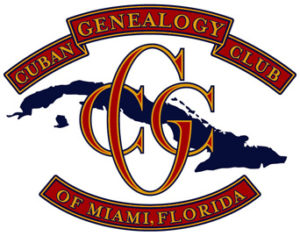Ecclesiastical Records
Oriente Province
About Oriente Churches
As of May 2023, we have 14 churches represented.
PLEASE NOTE: The files represented are NOT the complete holdings of these churches, only what we have been able to acquire.
IMPORTANT: These files are for personal use only! The use of the information on this site for commercial, political, or any other purpose other than research of your family history and genealogy is strictly forbidden.
Please contact, and credit, the CGC prior to using any part of this collection by sending an email to secretary@cubangenclub.org.
About Oriente Province
Oriente (Spanish for “East” or “Orient”) was the easternmost province of Cuba until 1976. The term “Oriente” is still used to refer to the eastern part of the country.
The origins of Oriente lie in the 1607 division of Cuba into a western and eastern administration. The eastern part was governed by Santiago de Cuba and it was subordinate to the national government in Havana. In 1807, Cuba was divided into three departments: Occidental, Central and Oriental. This arrangement lasted until 1851 when the central department was merged back into the West. In 1878, Cuba was divided into six provinces. Oriente remained intact but was officially renamed Santiago de Cuba Province until the name was reverted back to Oriente in 1905. This lasted until 1976 when the province was split into five different provinces: Las Tunas Province, Granma Province, Holguín Province, Santiago de Cuba Province, and Guantánamo Province. Oriente was one of the historical provinces of Cuba.
Cuban Church Records and Archives
A presentation on Cuban Church Records and Archives given by Fr. Juan Luis Sanchez on July 14, 2008 is offered here for dissemination with his permission.
A recording of this presentation is available for members on the Members Only-Videos Page
Other
Resources
Revista (the quarterly publication of the Cuban Genealogical Society)
Check out our Ecclesiastical Records Home Page for more information.
British Library's Endangered Archives Programme
The survey report produced provides details of the collections and information about their location, owners, and general condition. The survey includes an inventory of Sacramental Books in the Parishes of the Diocese of the Most Holy Savior of Bayamo-Manzanillo; the locations of books held in the Archbishop of Santiago Archives; and raw data from multi-site visits in Cuba.
Slave Societies Digital Archive at Vanderbilt University
The Slave Societies Digital Archive (SSDA), directed by Jane Landers at Vanderbilt University, was launched in 2003. It is dedicated to identifying, cataloging, and digitally preserving endangered archival materials documenting the history of Africans and their descendants in the Atlantic World.
Slave Societies teams digitally captured ecclesiastical records of more than 750,000 individuals during almost three years of intensive work in Cuba and Brazil. Beginning in 2007, another grant allowed the group to preserve additional records at new project locations in Brazil, Colombia, and Cuba.
Parish Register List
These parish books lists were provided by Juan Tamayo for his own family research. He also created and transcription of these registers for his use. They are also attached along with the PDFs of the documents he received from Cuba. We appreciate Juan’s generosity and work!
Our gratitude also to Roberto Roldos Lirio, retired director of the Historial Archive of the Archdiocese of Santiago de Cuba, who provided them.
If you spot any mistakes or have any comments, please contact Juan at Juantamayo@gmail.com
SPECIAL NOTE: These lists are accurate as of 2010.
Church Locations
- Catedral Nuestra Señora de la Asunción: Parque Céspedes en la calle Santo Tomás entre San Basilio y Heredia, Santiago de Cuba
- Basílica Santuario Nacional de Nuestra Señora de la Caridad del Cobre: El Cobre, Santiago de Cuba
- Nuestra Señora de los Dolores: Calle Vicente Aguilera nº 468, Santiago de Cuba
- Nuestra Señora del Rosario: 12 Calle Paquito Borrero, Palma Soriano, Santiago de Cuba
- Iglesia San Joaquin: San Luis, Santiago de Cuba
- Iglesia San Luis Obispo: Victoriano Garzon 424 entre Eduardo Dominguez y Roberto Lamela, El Caney, Santiago de Cuba
- Iglesia Santísima Trinidad: General Portuondo 661 entre Moncada y Calvario, Santiago de Cuba
- Iglesia Santo Tomas: S/n. esq. San Fermín, Santiago de Cuba
Church Books
- Nuestra Señora de la Asunción Cathedral – Books
- Nuestra Señora de la Asunción Cathedral – Tamayo Transcription
- Nuestra Señora de la Caridad del Cobre – Books
- Nuestra Señora de la Caridad del Cobre – Tamayo Transcription
- Nuestra Señora de los Dolores – Books
- Nuestra Señora de los Dolores – Tamayo Transcription
- Nuestra Señora del Rosario1 – Books
- Nuestra Señora del Rosario1 – Tamayo Transcription
- Nuestra Señora del Rosario2 – Books
- Nuestra Señora del Rosario2 – Tamayo Transcription
- Parroquia San Joaquin – Books
- Parroquia San Joaquin – Tamayo Transcription
- Parroquia de San Luis Obispo – Books
- Parroquia de San Luis Obispo – Tamayo Transcription
- Parroquia Santísima Trinidad – Books
- Parroquia Santísima Trinidad – Tamayo Transcription
- Parroquia Santo Tomas – Books
- Parroquia Santo Tomas – Tamayo Transcription
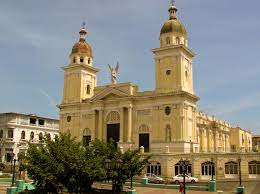
Nuestra Señora de la Asunción Cathedral in Santiago de Cuba
The cathedral is located in Céspedes Park on Santo Tomás streets between San Basilio and Heredia.
Alphabetical Index of the Parish Registers of Oriente, Cuba by the Cuban Genealogical Society*
This alphabetical index includes all the transcription from the Cathedral of the city of Santiago de Cuba. This index includes all the transcriptions available for the province of Oriente, which were made by Francisco Xavier de Santa Cruz and his associates.
The transcriptions were published in a number of issues of REVISTA, the quarterly publication of the Cuban Genealogical Society, since 1988. The information contained in the following index has the same format as the listings published, with the exception of the source number, to which it has been added the number of the REVISTA where it appeared first.
The format consists of the following information:
First column is Surmame; Second column is Name; Third column is Sex; Fourth column is Date of the event or ceremony; Fifth column is Type of event: M=marriage, B=baptism, D=death, C=confirmation,
G=related to the person performing the ceremony, usually a parent or previous spouse, or a witness to the ceremony; Sixth is the Source Number which consists of the following codes: 6 digits of source; (,) 5 digits of book and page or page only; (#) entry number; (R) REVÍSTA volume and issue number.
When finding a name that you are interested in, make note of the Source Number, date, and parish, then refer to the REVISTA issue that has the entry published with all the members of the families in question together as an entry. This process will give you the ñames of all the persons involved in the ceremony.
Note:
The surnames and given names have been kept in the form that appeared in the original transcription, even though it was sometimes obvious that the spelling was not the one used in modern times.
In order to find a surname that you are interested in, please consider and check all the possible spellings for that name. For Example: Jiménez and Ximenez; Avalo and Abalo, etc.
*The Cuban Genealogical Society is now defunct. We are grateful to Mayra Sanchez-Johnson for her work.
El Cobre
Marriages (1667-1795)
These images were donated by CGC Members Juan Tamayo and Dr. Raul Olazabal from their personal research.
Our gratitude to them and to Roberto Roldos Lirio, retired director of the Historial Archive of the Archdiocese of Santiago de Cuba, who provided them.
Gallery of Images
Baptisms - Book 1 (1663 - 1666)
Our gratitude to Roberto Roldos Lirio, retired director of the Historial Archive of the Archdiocese of Santiago de Cuba, who provided this transcription.
Gallery of Images
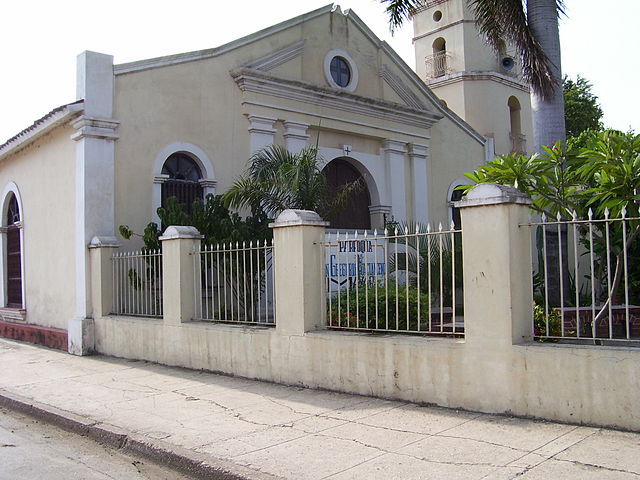
San Gregorio Nacianceno Church in Mayarí
The church is located at Maceo #2 between Leyte Vidal and Cespedes Avenue, Apartado 27, Mayari, Cuba
Church Documents on SSDA
Libro 1 y 3 de Bautismos de españoles (1793-1851)
Libro 3 de Bautismos de Pardos y Morenos (1827-1854)
Libro 4 de Bautismos de Color (1844-1854)
Libro 5 de Bautismos de Color (1854-1864)
Libro 6 de Bautismos de Pardos y Morenos (1865 – 1880)
Libro 7 de Bautismos de Blancos (1869-1876)
Libro de Matrimonios de blancos y de color (1827-1868)
Libro 1 de Entierros (1822-1823)
Libro 2 de Difuntos (1827-1859)
Libro de Entierros de Pardos y Morenos (1853 – 1856)
Libro 4 de Entierros de Pardos y Morenos (1857-1881)
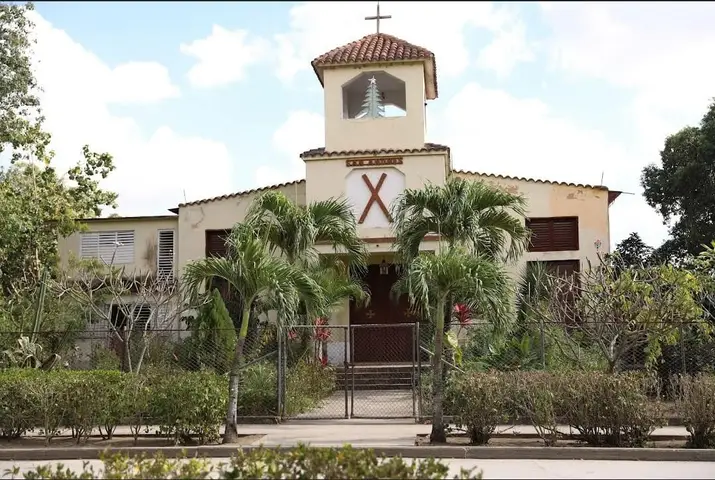
San Andrés de Guabasiabo
The church is north of Holguín. It was inaugurated on 22 June 1862.
Our thanks to William Navarrete for his work and generosity!
William has blog of the genealogy and history of Holguin and Banes called “Genealogia Holguin Cuba”
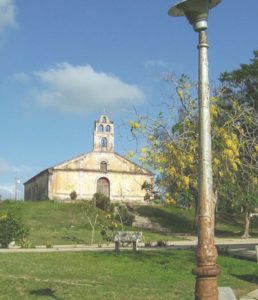
Jesús del Monte de Auras
The books of Auras are kept in the church of Gibara.
This index was a collaboration between Enrique Doimiadiós (a historian who lives in Auras) and William Navarrete.
Our thanks to William Navarrete for his work and generosity!
William has blog of the genealogy and history of Holguin and Banes called “Genealogia Holguin Cuba”
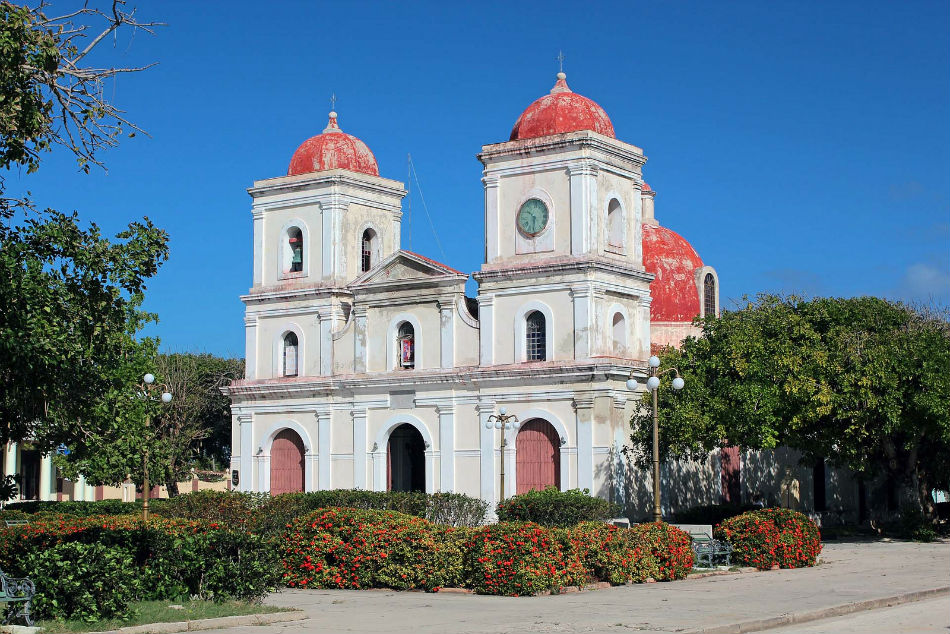
San Fulgencio de Gibara
It is located in the Plaza Calixto García, Gibara, Cuba. It was inaugurated in 1820 as a construction of wood and tiles. Due to the materials used the building suffered heavy deterioration and in 1850, Victoriana de Ávila from Holguín hired the architect Juan Bautista Pons to build a new church. The work was completed 3 years later.
Our thanks to William Navarrete for his work and generosity!
William has blog of the genealogy and history of Holguin and Banes called “Genealogia Holguin Cuba”
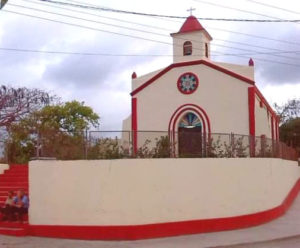
Santa Florentina del Retrete, de Bariay y Fray Benito
THe church is located in the northeast section of the city of Holguin at "Calle 5 entre 3 y 6." The parish books begin in 1820 when the church was in the town of Bariay. In 1856 they were transferred to Fray Benito, where they are currently situated. After a fire in 1921, the church was rebuilt using masonry. Thankfully, the fire did not affect the parish books. In 1956 President Fulgencio Batista Zaldívar, baptized there, ordered the construction of the current stairway, wall and chancel.
Our thanks to William Navarrete for his work and generosity!
William has blog of the genealogy and history of Holguin and Banes called “Genealogia Holguin Cuba”
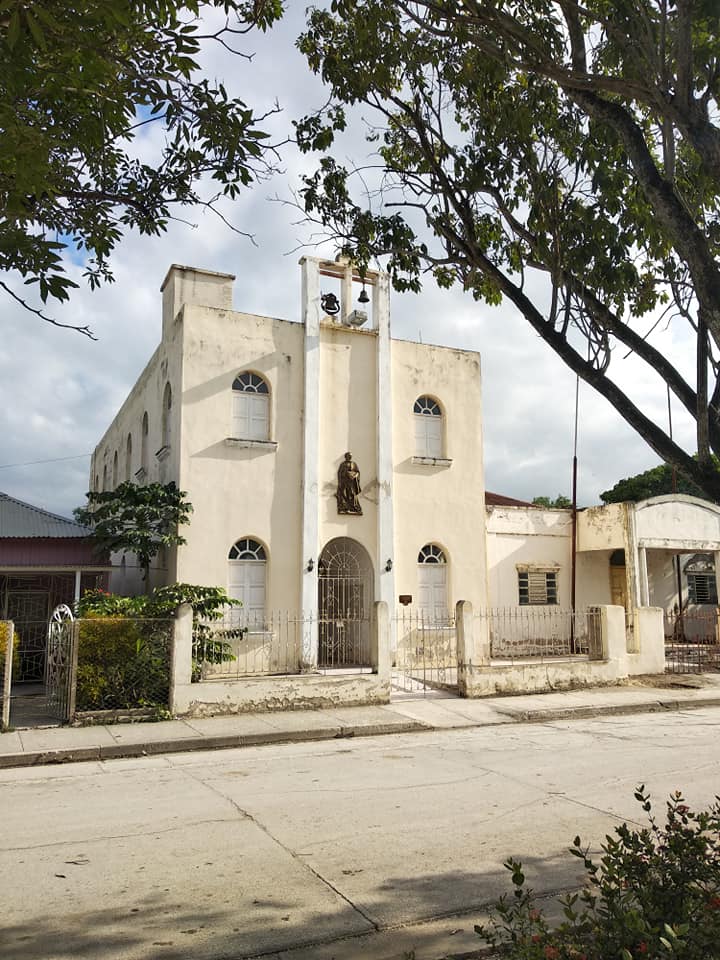
Santa Margarita de Cacocum
It is located in the town of Cacocum (southwest of Holguín.) It was inaugurated in 1857.
Our thanks to William Navarrete for his work and generosity!
William has blog of the genealogy and history of Holguin and Banes called “Genealogia Holguin Cuba”
